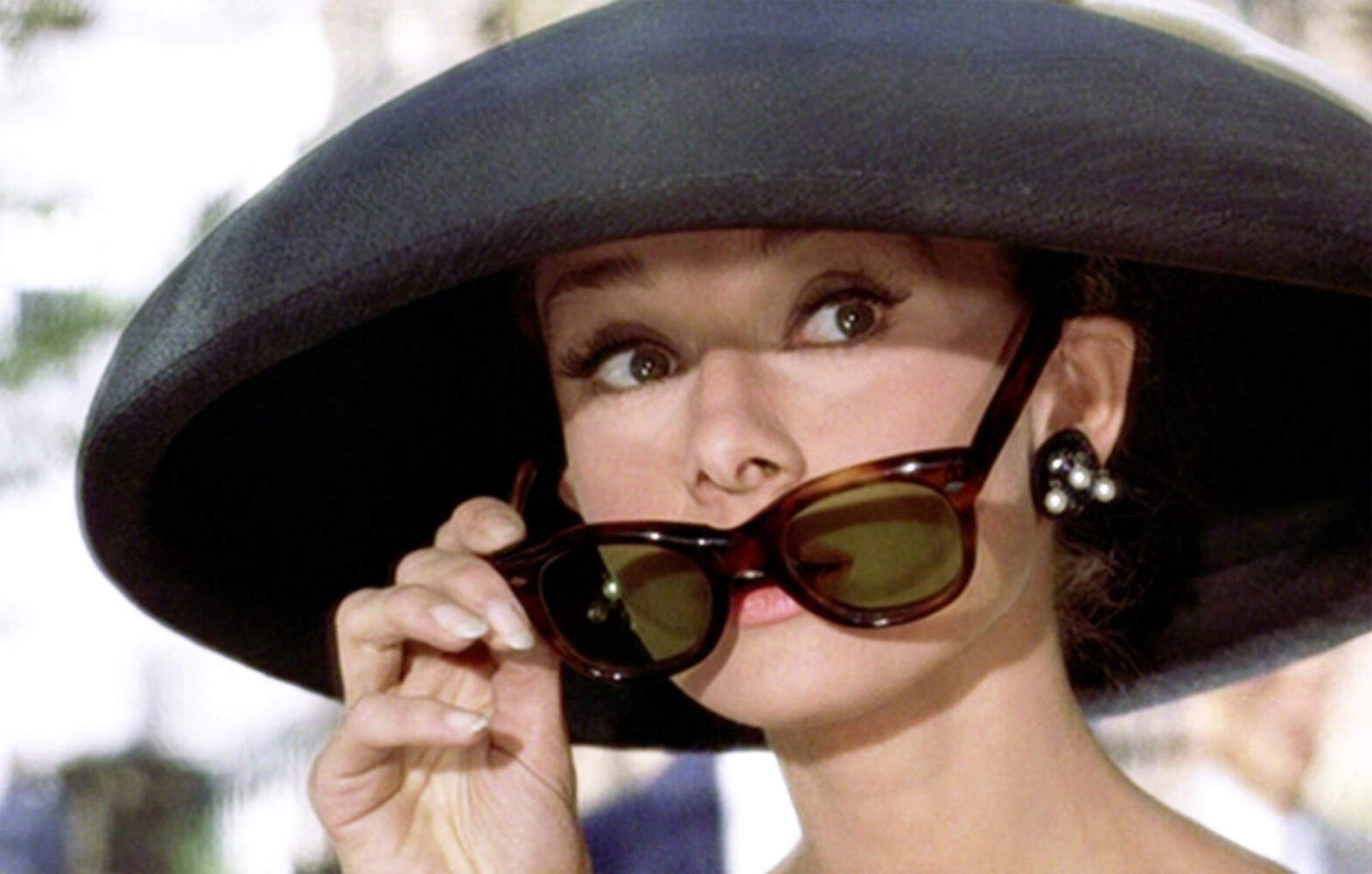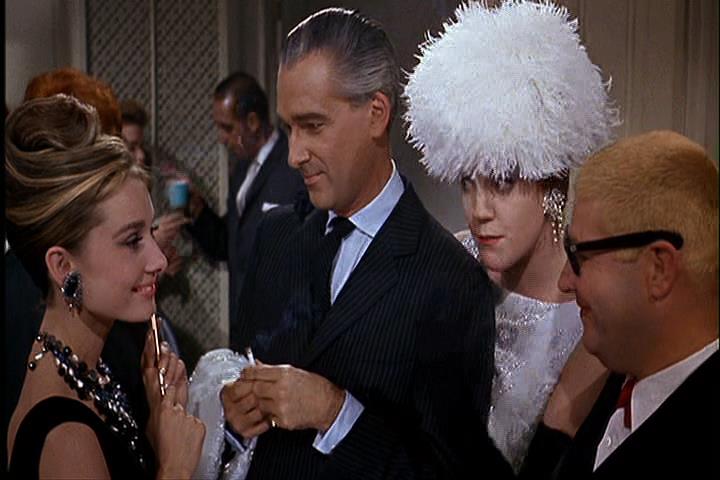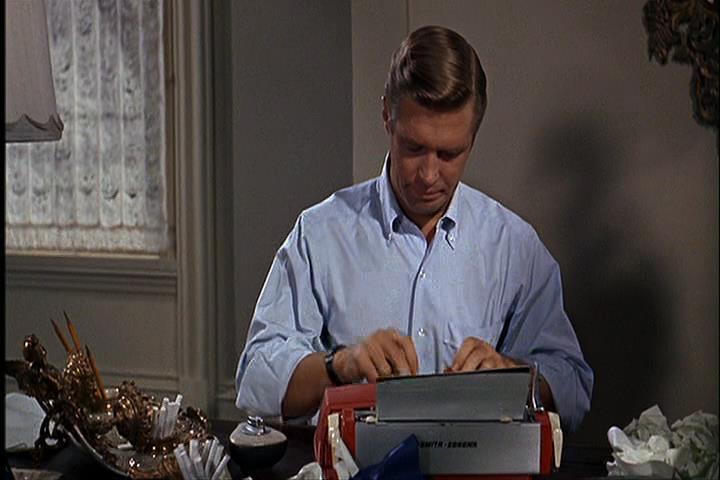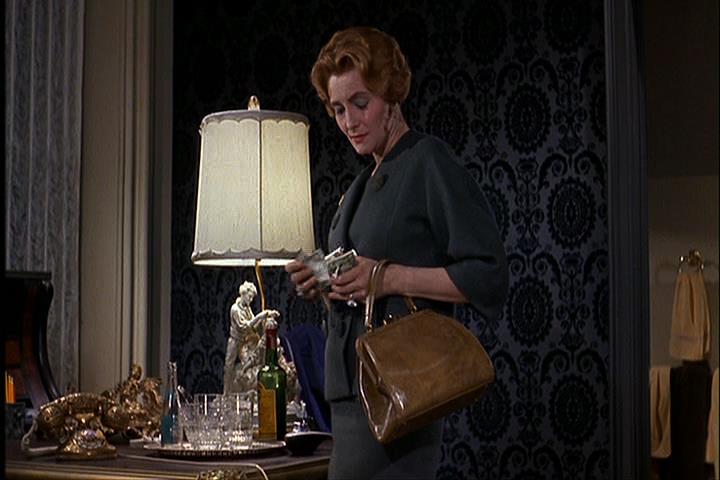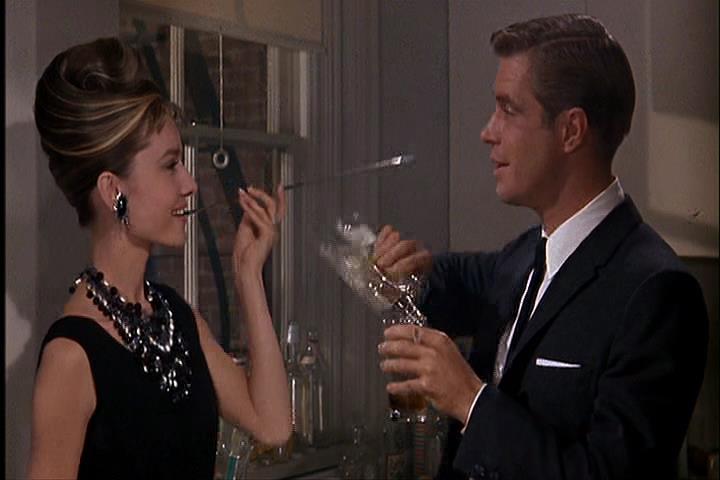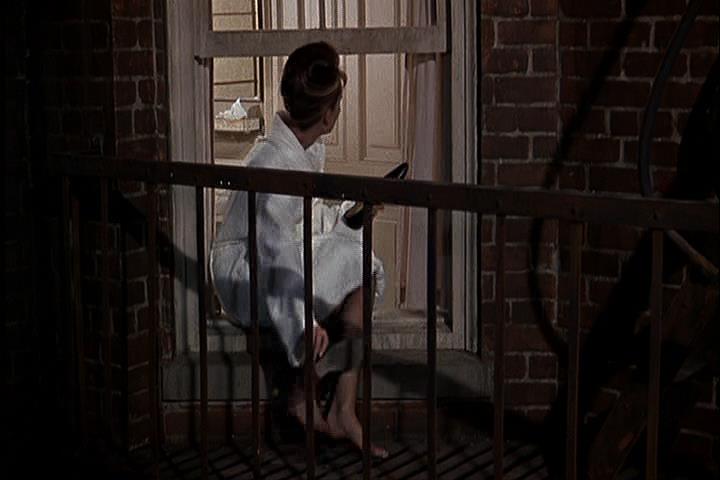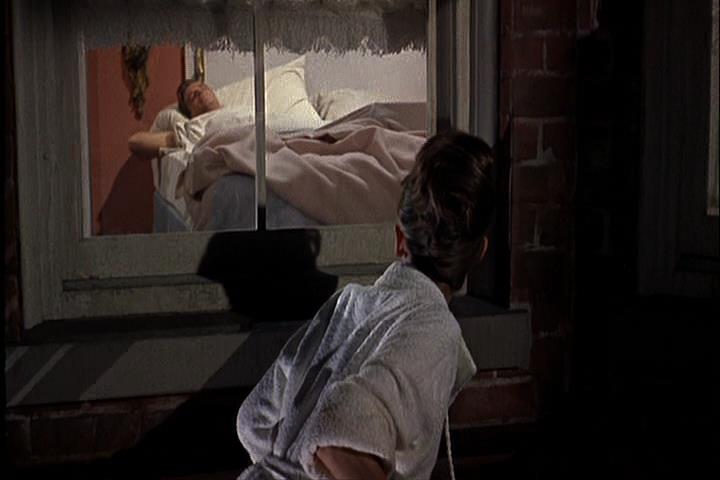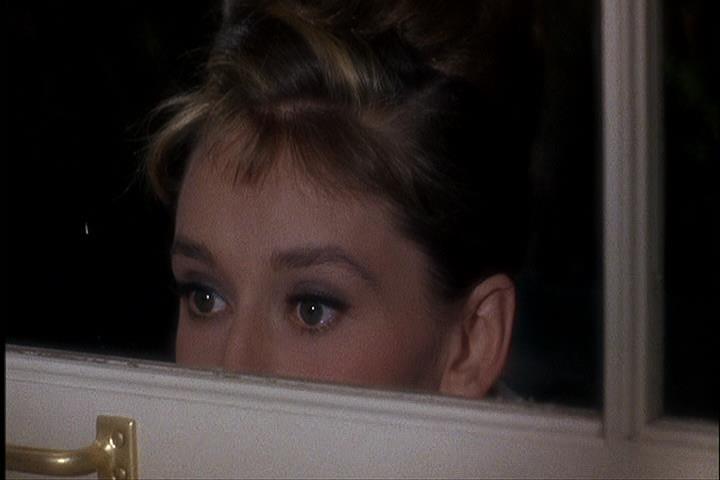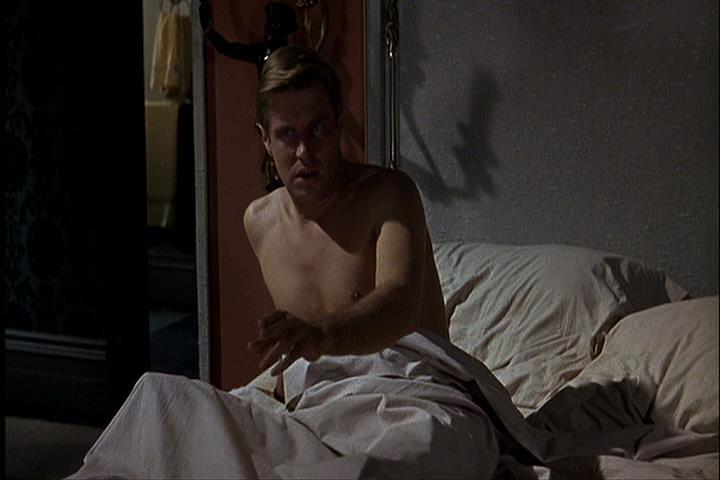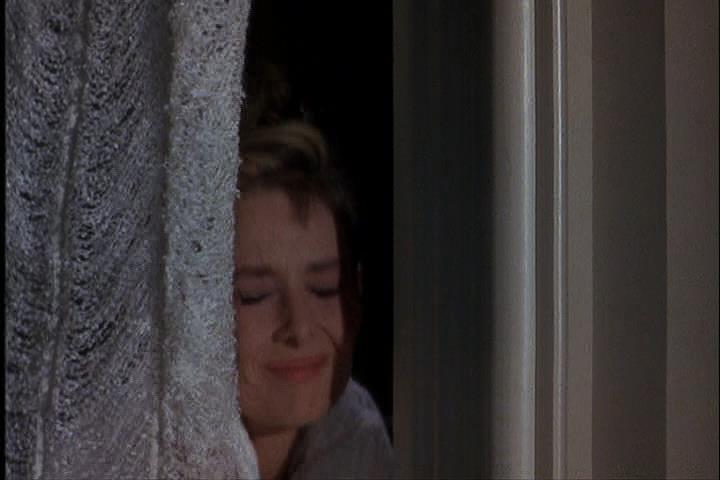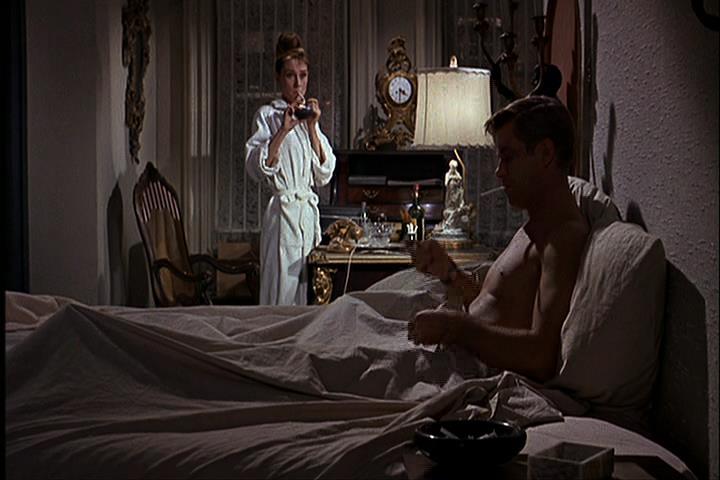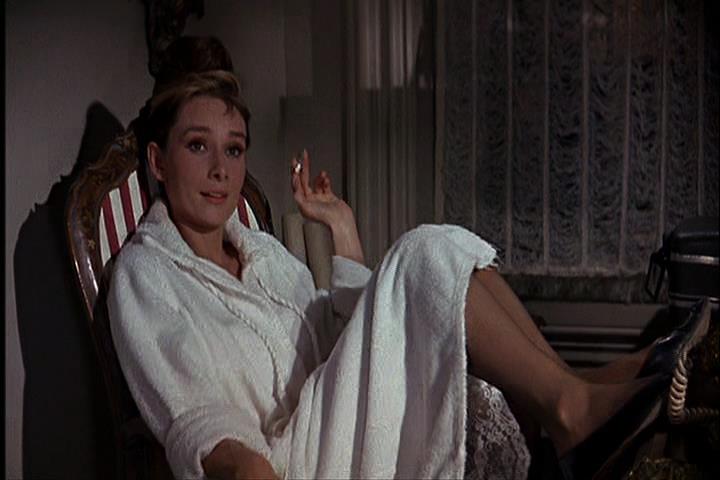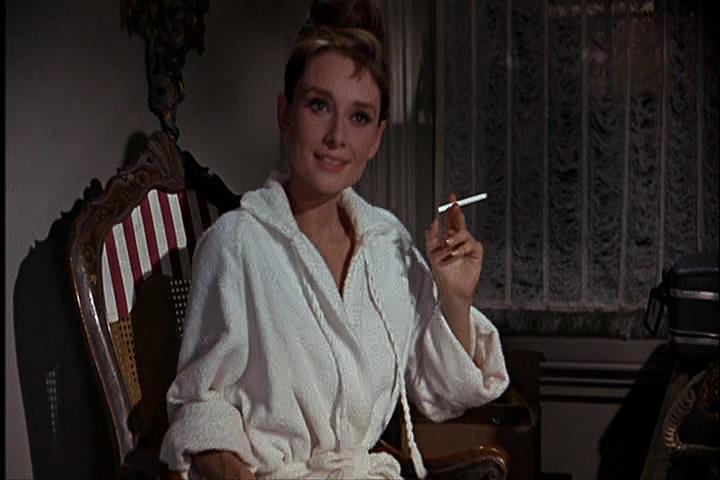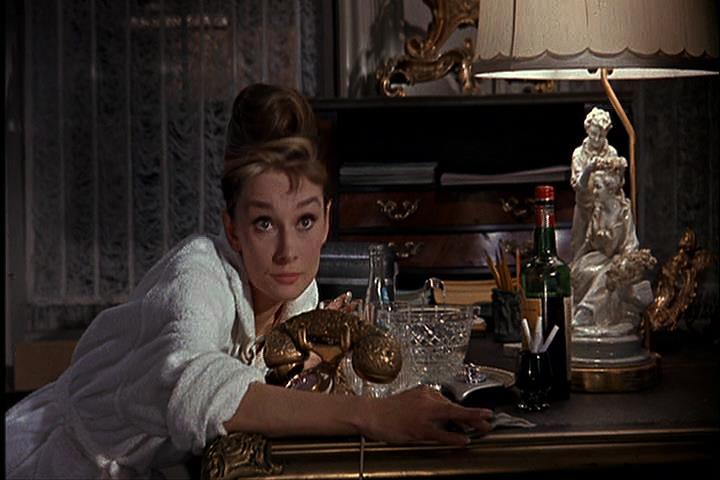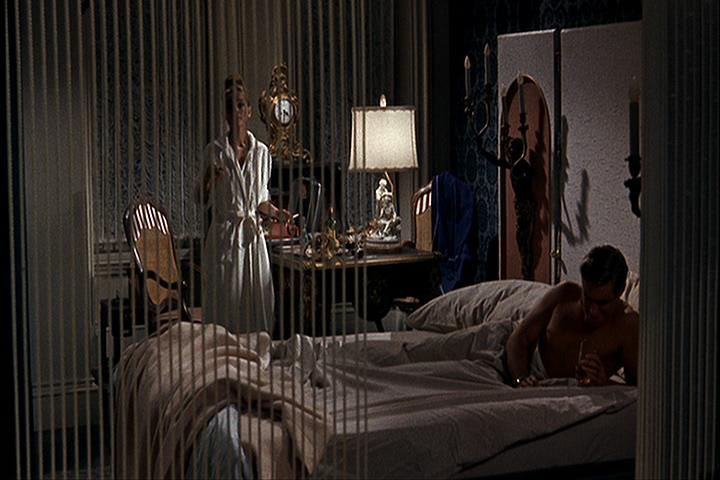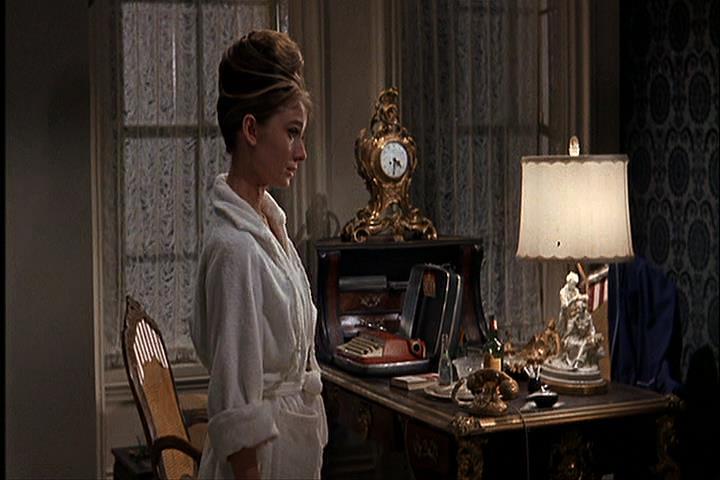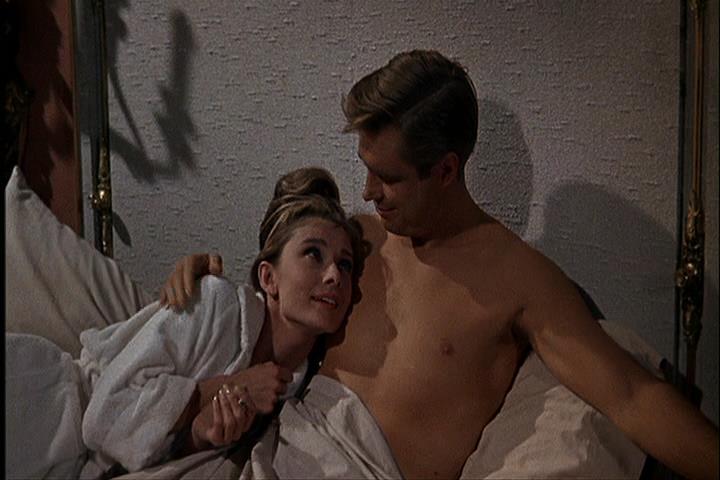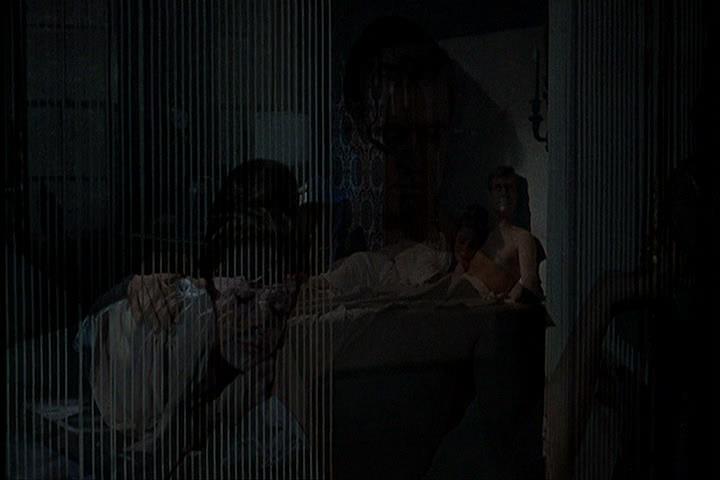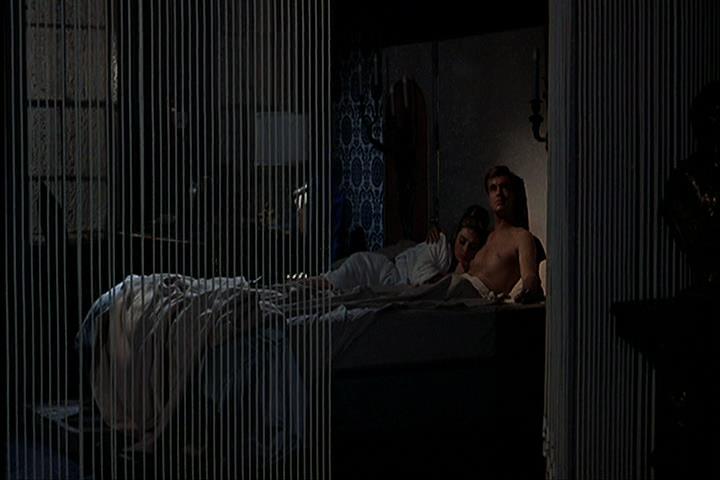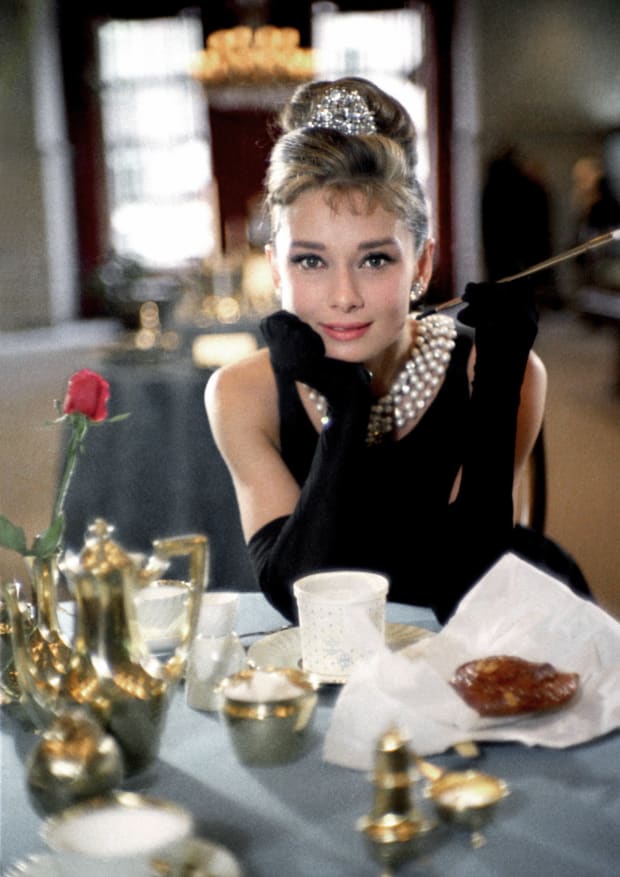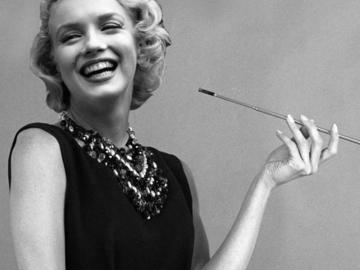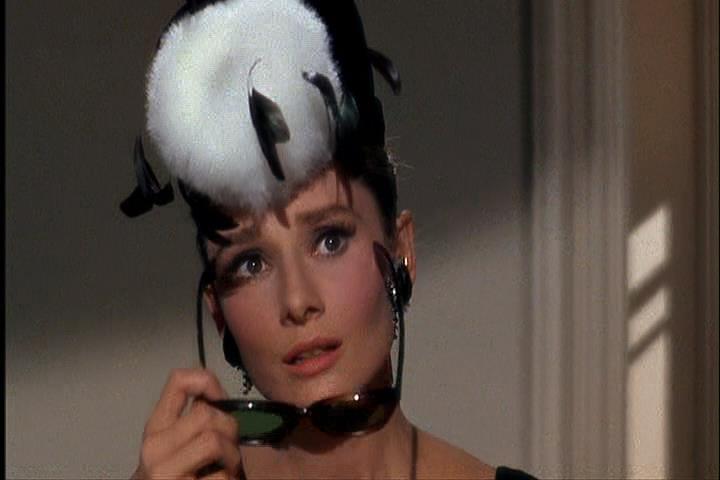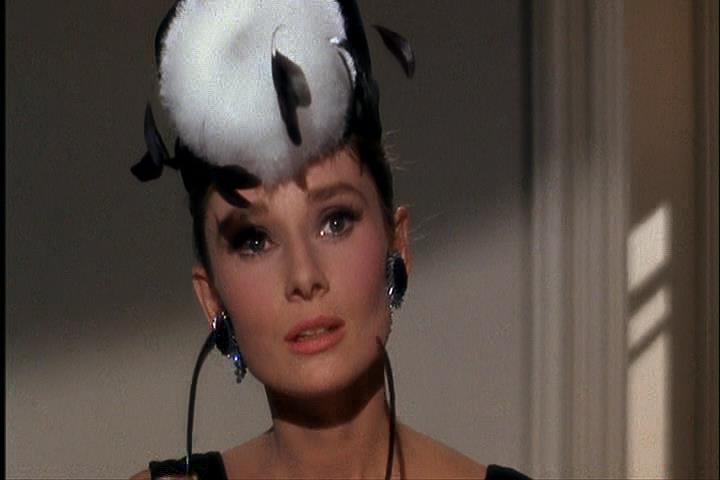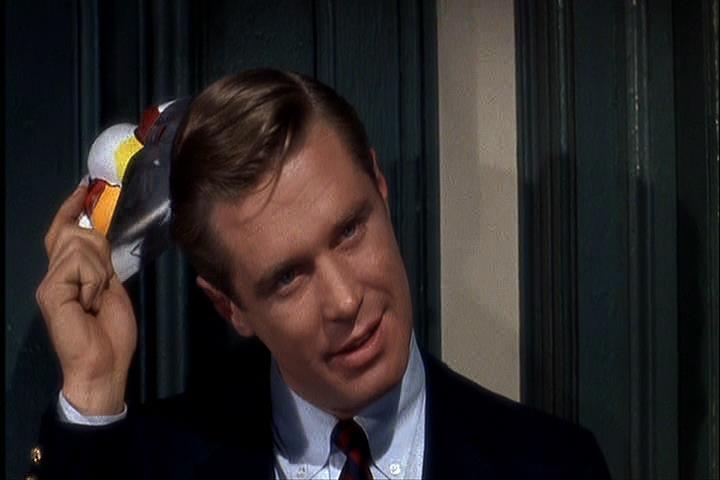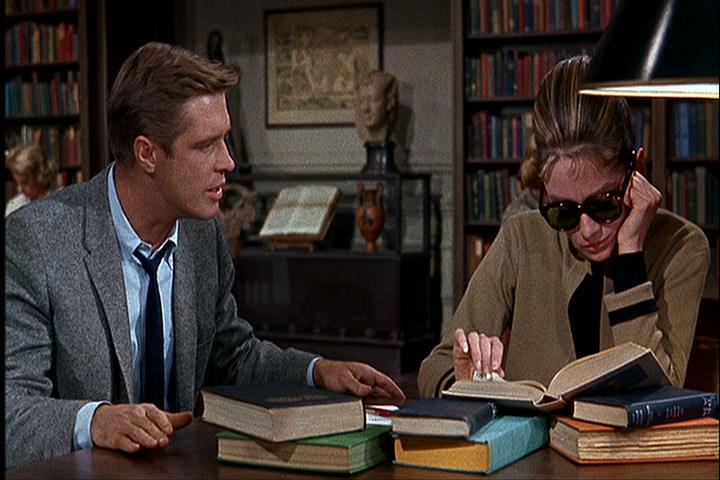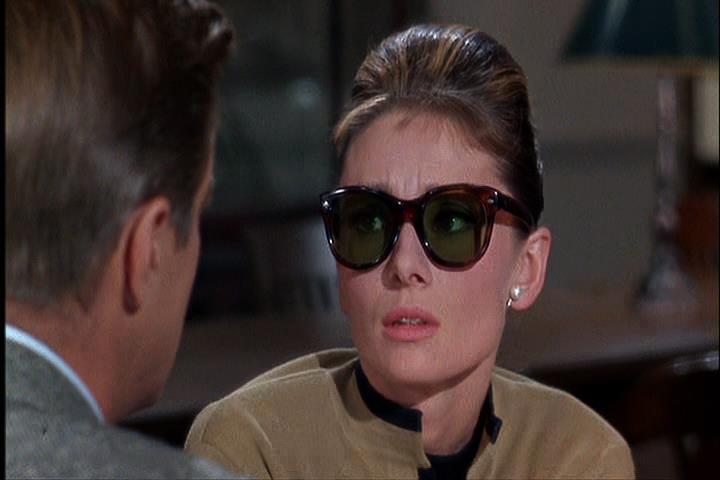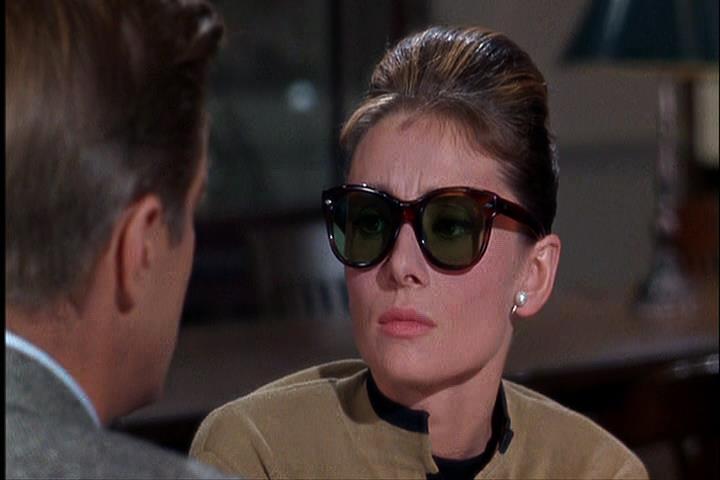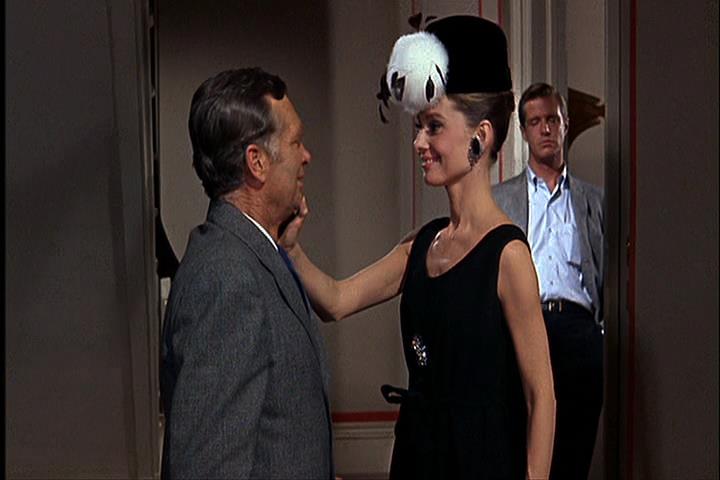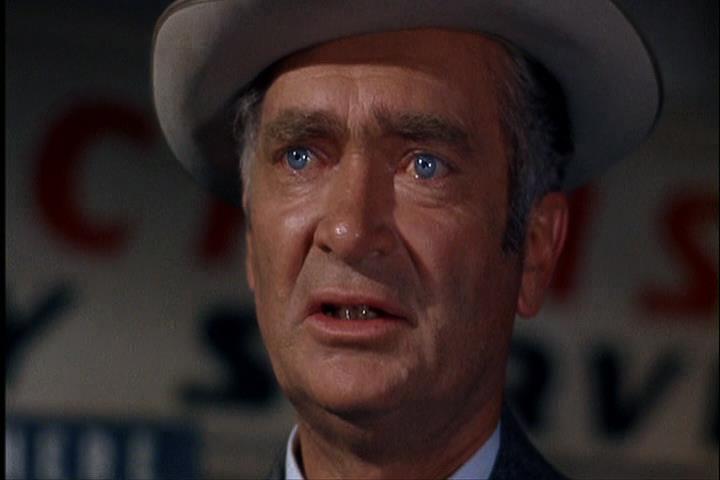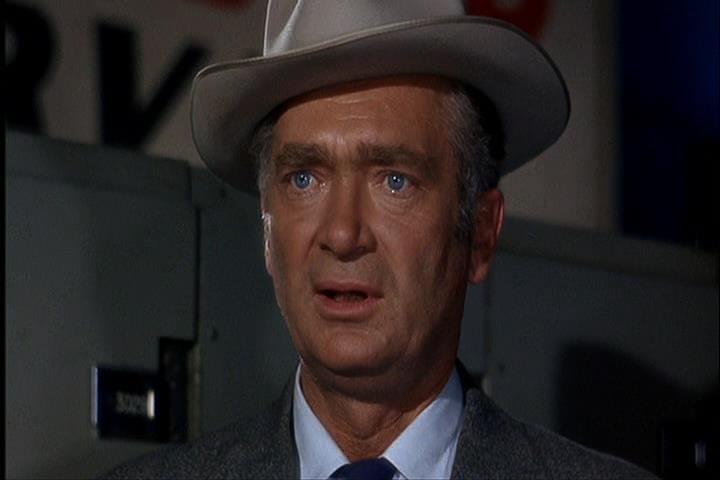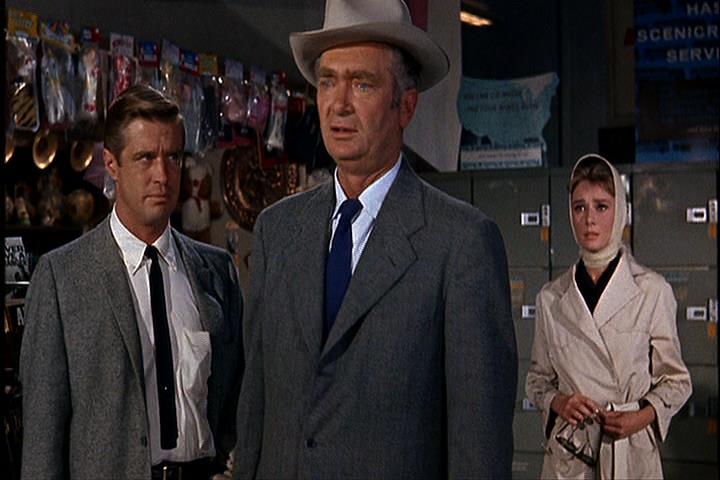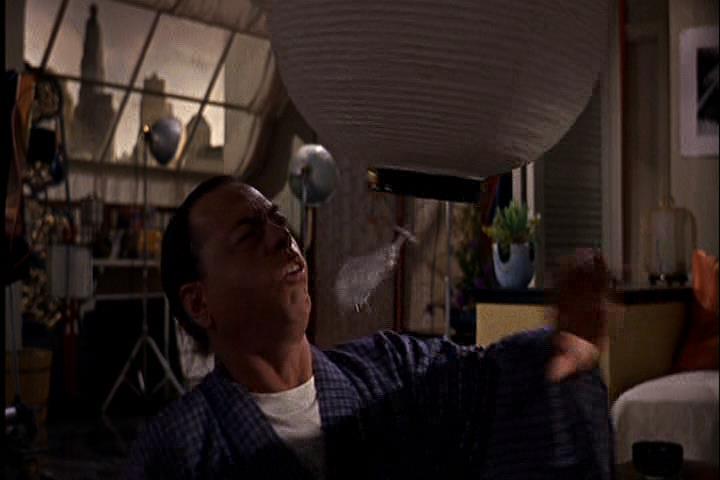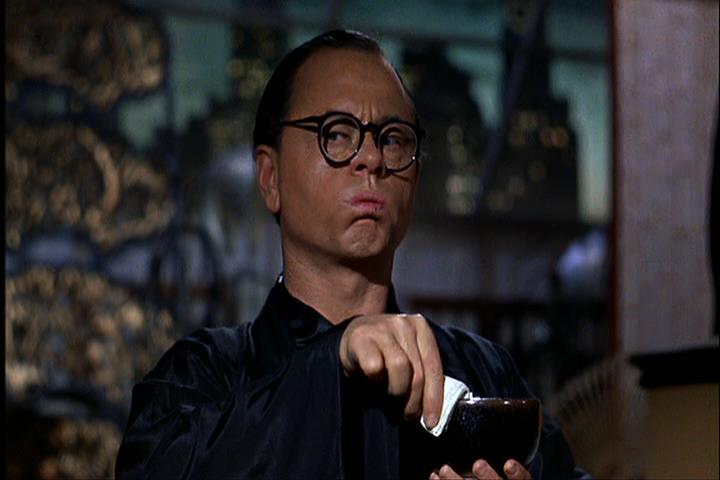
Breakfast at Tiffany’s (1961) is still a thoroughly entertaining and engaging movie, even at the age of 60. What has made it endure for so long is the real connection audiences make to Holly Golightly, played by Audrey Hepburn.
The movie had a very contemporary setting and the early 60s had a distinct vibe. John F. Kennedy had said “the torch has been passed” to a new generation, and there was great optimism for a modernized culture. The ascension of the Greatest Generation to true political power enabled them to put in place many of the ideals they brought home from the war.
Breakfast at Tiffany’s reflects the vibe
The early 60s chic vibe has a palatable presence in Breakfast at Tiffany’s. You hear it in the music and see it in the settings and costumes. It’s also seen in the attitudes of many of the characters. When most people think of “the 60s” they get the mental image of the second half of the decade. Vietnam. Politically energized youth. Counter-culture. But the early 60s were more reflective of the aspirations the Greatest Generation had for their children (which I discussed in my review of The Graduate) combined with a chic style to aesthetics and lifestyle. An everything is new and we’re moving boldly into the future attitude.
Production
John Frankenheimer and Blake Edwards
The original Director for Breakfast at Tiffany’s was John Frankenheimer, who would later direct dark and political thrillers like The Birdman of Alcatraz, The Manchurian Candidate and Seven Days in May. Paramount felt he would be too heavy handed for the project and wanted a much lighter touch for the movie. Audrey Hepburn’s agent also objected. Frankenheimer had only directed television up to this point, and Hepburn’s agent wanted a more experienced director. He was replaced by Blake Edwards, who had directed Operation Petticoat and had the lighter comedic touch that Paramount preferred.
Truman Capote
Truman Capote had written the novella on which the screenplay was based. He wanted Marilyn Monroe cast in the lead, and felt he had described her perfectly in the book. George Axelrod was hired to tailor the script for Monroe. But her mentor, Lee Strasberg, felt that playing “a lady of the evening” would be bad for her image. Monroe turned down the role and appeared in The Misfits instead. Paramount didn’t want Monroe either. They didn’t want all the headaches of dealing with her on set, and also felt that she was too soft for the role. As intriguing a thought as Monroe is, once you see the movie you would have to agree with Paramount. Hepburn brought a strength and intelligence to the role that Monroe never could have.
Capote was not pleased. He felt betrayed and remarked “Paramount double-crossed me in every way and cast Audrey”. He hated the movie and felt that the creators had “taken this amoral character and turned it into some boring Audrey Hepburn thing”. 60 years later it’s impossible to imagine Breakfast at Tiffany’s any way other than in its original form. All of Monroe’s other qualities aside, it’s hard to imagine her pulling off that early 60s chic the way Hepburn did. It’s also hard to imagine the end of the movie with Monroe.
Differences from Capote’s novella
There were vast differences between the novella and what ended up on the screen. A great deal of this was because of the Production Code. The Code was highly weakened but still intact after a series of content breakthroughs by Some Like it Hot, The Apartment and Love is a Many Splendored Thing. But without those breakthroughs it’s doubtful that Breakfast at Tiffany’s would exist as we know it today.
- The book leaves very little doubt about what Holly is doing for those “$50 trips to the powder room”. That wasn’t going to fly for a movie, even by 1961. Truman Capote would later describe the Holly of his book as a Geisha, which still leaves little in doubt. It’s about the whole experience, not just the sex.
- Paul Varjak, played by George Peppard, doesn’t exist in the book. At least per se. Both the movie and book are told through the eyes of either Paul or “the narrator” through which the Paul Varjak character emerged. In the book, that voice is clearly Truman Capote himself, describing his interactions with “my friend”. The narrator of the book is also unmistakably a gay man, like Capote. Something else that wasn’t going to fly in 1961.
- 2E, played by Patricia Neal, does not exist in the book. This character was invented when Paul was. It added depth to Paul’s character and his relationship with Holly. They’re both people of questionable virtue, using the affections of rich people to get through life and to get ahead.
- The book is set in the 40s and doesn’t have the chic that the movie does.
Biggest Differences
- The slow burning romance between Paul and Holly simply doesn’t exist in the book because “the narrator” is a gay man. On this one I come down squarely on the side of the movie. It’s impossible to think that the movie would still be so universally loved without it. It’s the fact that you are so drawn into it and so highly emotionally invested in it that makes the movie so loved.
- In the book, rather than abandoning her plans to flee the country and choosing Paul Varjak, Holly follows through. Months later “the narrator” and a friend are in a museum and come upon a statue made in Africa that is unmistakably Holly. Again, it’s impossible to believe that the movie would have it’s long lasting impact without the romantic ending of the movie.
Who was the inspiration for Holly Golightly?
It’s a question that has been asked for more than 60 years. Capote got Holly’s background straight from his mother, Lillie Mae Faulk (pronounced “Fawk”–you can already imagine the knick names). Lillie Mae abandoned her child in Alabama and set out to recreate herself in New York City as a party girl named Nina on the lookout for a rich husband.
Holly’s existentialism came from Capote, while Holly’s distinctive personality came from a few sources. Quite probably one lived in Truman’s apartment building in New York. The rest came from a coterie of celebrity New York cafe society girls he called “my swans.” The three swans believed to be the main inspiration for Holly are Carol Marcus, Gloria Vanderbilt and Babe Paley.
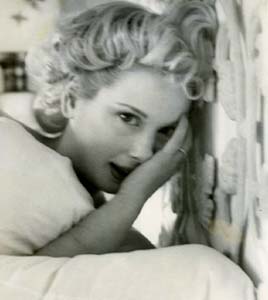
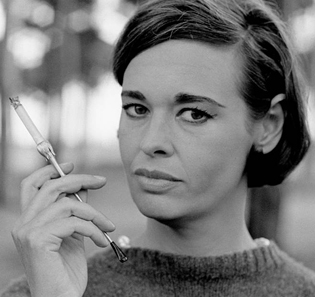

Blake Edwards Directs Breakfast at Tiffany’s
Picking a Scene Apart: There’s more here than the audience perceives:
People tend to think of Blake Edwards as a director of mostly superficial, light comedies that are good for some laughs without much substance or artistry involved. You are about to discover otherwise.
There is a scene very early in the movie that the audience doesn’t take much notice of but it actually tells us volumes, and establishes volumes for the characters. It’s actually a very important and very beautiful scene in every way.
Holly climbs out onto the fire escape to get away from a drunk man being overly aggressive. She’s running from her problems. Note the bars. Holly has said she doesn’t want to be in a cage. But as Paul establishes at the end of the film, her current life has put her in that cage. She’s going up to see Paul, whom she feels safe with.
She climbs the fire escape and sees Paul asleep in his bedroom. Note that she could have dressed differently and gone down the fire escape. It’s an early clue that she is forming an attachment to Paul. Then she sees that 2E is with him and that she is leaving money on the table. Commonality is established between Paul and Holly–leaving money on the table is a classic characteristic of high end sex work.
Holly enters the room and the journey begins
With 2E safely gone, Holly enters Paul’s bedroom. Note the distinct bar pattern on the curtains. Edwards subliminally reminds us she’s in her cage. But it also symbolically shows that Holly can come out of her cage for a real life with Paul.
Paul is startled, as anyone would be. He’s anxious that 2E might still be there and he doesn’t want her to see him with another woman in his bedroom who is only wearing a bathrobe. A crash from Holly’s apartment established urgency and Holly is allowed to enter. He can’t just shush her away because of the danger. It gets her in the room and it’s brilliant.
Holly and Paul become more comfortable with each other
Edwards establishes early on that there is instant comfort and chemistry between the two of them. Holly tells Paul he is “sweet,” establishing that there is potential here for more than friendship. The third one is a big one. Holly then remarks that Paul looks like her brother Fred and asks if she can call him that. Paul replies “sure.” There is no one whom Holly cares about in a real way other than her brother. It’s telegraphing to the audience that Holly has brought Paul in very close. She’s connecting him to something very close and real to her. Throughout the movie, the only time Holly is her real self is when she is with Paul.
Holly notices the $300 2E has left for him. Holly comments “$300. She’s very generous.” Edwards cuts to the next shot, where Holly is telling Paul she understands and he shouldn’t be offended. Notice the bars on the left half of the screen where Holly is. She’s talking about what she does, and Edwards tells the audience she is back in the cage of her own making.
Things get intimate without being overtly sexual
Holly lies in front of Paul on the bed and tells him about her future dreams. It’s subliminally speaking volumes to the audience. She’s letting Paul see the real Holly. Sharing very intimate personal things about yourself is something couples do in the early stages of romance. Could it be any more obvious this is where things are ultimately heading? Holly then asks if she can spend the night there, nothing funny “just friends, that’s all.” She joins Paul, he under the covers and her on top. But they are now in a very intimate semi-embrace. This, and they way they are looking at each other screams at the audience that highly potential romance is in the air.
Subliminally, a potential bright, happy future is conveyed
Paul turns out the lights and Edwards begins a brilliant dissolve. We first see Holly in her cage, ending with her beside Paul outside the cage. It’s a brilliant tellegraphing that tells the audience she has a realistic chance of getting out of the cage she has made for herself and have a real life with Paul. Paul is looking towards the darkness, symbolizing the place in life each of them find themselves.
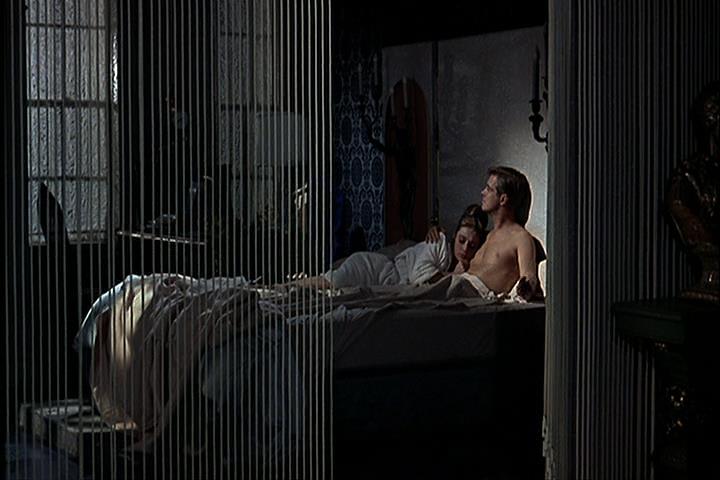
He looks to his right. As the moon light begins to come through the window and illuminate them in a beautiful, soft white light, Paul looks towards the window and into the light. Symbolizing that they can get out of the life they are in, go out through the window and into the beautiful, romantic light of the future together.
It’s a very soft and intimate scene. Very softly lit and photographed. Very soft speaking voices. Most people don’t notice it in their real lives, but when you’re with someone you are romantically interested in your voice (particularly women’s) gets much softer. The scene is about drawing them together and establishing very early on there is a very special connection between them.
And you thought it was a transitional scene that wasn’t saying very much about the characters, their current place in the story, their awakening romantic feelings, and a potential different future for both of them by coming together.
For more detailed scene breakdowns of Breakfast at Tiffany’s see our first article of the new Frame by Frame series: Frame by Frame: Blake Edwards.
Performances: The power of the movie
Audrey Hepburn as Holly Golightly
There’s no question that Audrey Hepburn’s performance is what keeps the movie so alive today. The character she crafted, the costumers who dressed her, and the writer who made her sing, created one of the most iconic images ever to come from the movies. Impeccably dressed, covered with jewels, long cigarette holder and exquisitely beautiful.
Despite Capote’s dismissals, she was the perfect choice for the role. You can’t honestly say to yourself that Marilyn could have brought anything more to the character than her breathy vocal patterns and the unmistakable quality that at any moment she could shatter. She never could have pulled off the inner strength, class, elegance and intelligent charm that Audrey Hepburn brought to the part.
The PhotoShopped picture to the left is a perfect example. You honestly can’t see her the way we see Hepburn in the part.
Her face tells you everything about how Holly really feels
On top of these qualities, there is a real power and greatly added depth to the character which comes not from the words she sometimes speaks, but from her reactions. Her mouth will say one thing, but her facial reactions say something else entirely. You know exactly how she feels internally from these reactions (whether she’s said something or not.) It’s completely subtle, natural, and absolutely brilliant.
Example One
In the sequence above, Holly still has her game face on. Then she knows who could have possibly told Paul her real name is Lula Mae Barnes. Finally, her face softens dramatically as she believes her brother Fred is somewhere near. This is one of my favorite moments of the film in particular.
Example Two
In another one of my favorites, Paul removes his mask and reveals a softened face. More importantly, Holly removes hers also revealing a very softened face. Finally, from the last two, even though nothing is said, we have no doubt about exactly what Holly feels for Paul.
Example Three
In this magnificent scene, after their date that they weren’t calling a date, Paul finds Holly in the library. She acts aloofly towards him. Then in a closeup we see Holly look at Paul stoney faced. Paul tells her he loves her and her reaction lets her true feelings slip ever so slightly. But she remains cold and aloof. In this scene, Holly has told Paul she is going to South America to marry a rich Brazilian who will once day be President of Brazil. She denies any feelings for Paul and sticks to her message about what she’s really after.
After Paul leaves, we see her reaction in the fourth picture. She feels horrible about it. She does care about him, but she still has the mantra of get a rich husband in her head. Holly treats Paul like this to drive him away despite her feelings because she’s still stuck on this mantra. She’s doing what she thinks she has to do. Most importantly, this is the first time she’s had true feelings for any man and it scares her. So, she’s running away from what she sees as her problems.
Paul is the only person Holly cares about other than her brother Fred, and the only one she cares about “in that way.” She never admits it verbally until the very end, but throughout the movie her face screams it.
George Peppard as Paul Varjak
George Peppard was put in a strange position as the leading man. We see the story through his eyes but the hearts of the audience know no love but Holly. Usually, the person through whose eyes we see the story is also the one the audience follows. But here, it’s all Holly. It is important to note that without Paul you have no movie because there would be no narrative structure without him.
Peppard brought the right amount of strength and acceptance to the part. He is strong enough to confront Holly when it may be needed, but is also accepting of her lifestyle. He’s also non-judgemental for the most part. When he stands up to Holly, you don’t hate him for it but rather understand his feelings and why he is having them. His conflicts with Holly have to do with their relationship not her lifestyle and Peppard always finds just the right way to convey that to the audience. It’s his most remembered, and possibly his best performance.

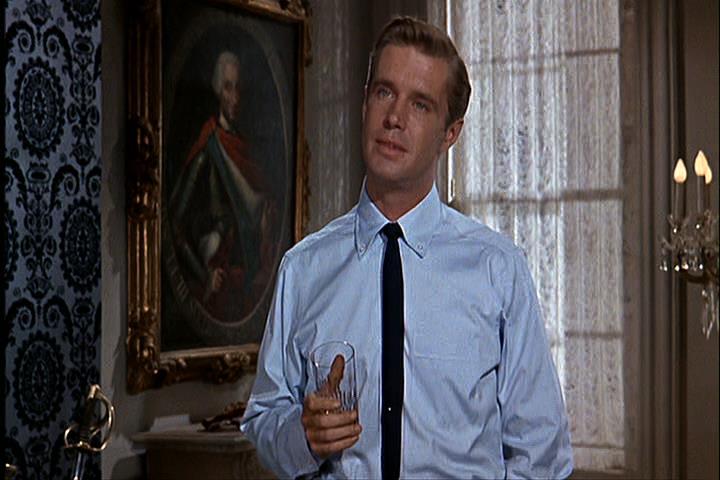
Buddy Ebsen as Doc Golightly
Buddy Ebsen gave his greatest screen performance in Breakfast at Tiffany’s. On the page, it would have been easy to see Doc as a thoroughly unlikeable character–a man who marries a 13 year old and comes to New York to bring her back. Any incorrect line reading would have made him seem manipulative or worse. Ebsen found the one and only way to make Doc likeable: he made him sincere and vulnerable. The result was a remarkable performance and at the end of it you actually feel for him.
Mickey Rooney: The Yunioshi Problem
Mickey Rooney could have learned a lesson from Buddy Ebsen. If ever there was an issue in a movie that makes it controversial today it’s this one. It’s a cringe worthy performance like no other. Mickey Rooney pulled every Asian stereotype out of the bag and incorporated them into Mr. Yunioshi: a Japanese photographer who is nearsighted and wears extremely thick, round glasses. He used prosthetic, large teeth and a thick, stereotypical accent. The character was also a complete buffoon. Yunioshi is the sole reason why I only gave the film four stars.
It could have been argued at the time that it was a comedy film. Well, it wasn’t the Second World War anymore. They really should have known better. It was particularly offensive to Asians at the time, and others as well over time. Better character choices could have been made in the role without making him a buck-toothed, screaming fool. Some have argued that the character could be edited out of the movie, and after viewing it I agree that it could done very easily–especially with CGI. But there are some movies that are so beloved that you dare not tamper with them. However I do feel that in future Blu Ray releases two options can be offered to viewers. One with Yunioshi and one without him. It seems a fair compromise.
It won’t come close to destroying your enjoyment and love for the movie. It’s thankfully only about 2 minutes and 45 seconds of screentime, but they can induce deep cringes from the viewer.
The Legacy of Breakfast at Tiffany’s
Breakfast at Tiffany’s was nominated for nine Academy Awards: Best Actress, Screenplay, Production Design, and won Best Song and Best Score. It was selected for the National Film Registry in 2012.
It was a critical and box office success, earning $14 million from a $2.5 million budget. Most girls discover it when they are teenagers and most fall in love with it. When they show it to their boyfriends when they’re in their 20s, most of them are drawn to it as well. The classic images of Audrey Hepburn as Holly Golightly remain top selling frame art and posters.
Breakfast at Tiffany’s endures and lives on generation after generation because of its chic style and music, the captivating power of Hepburn’s performance, and the ageless love story which elicits great emotional investments from the audience.
